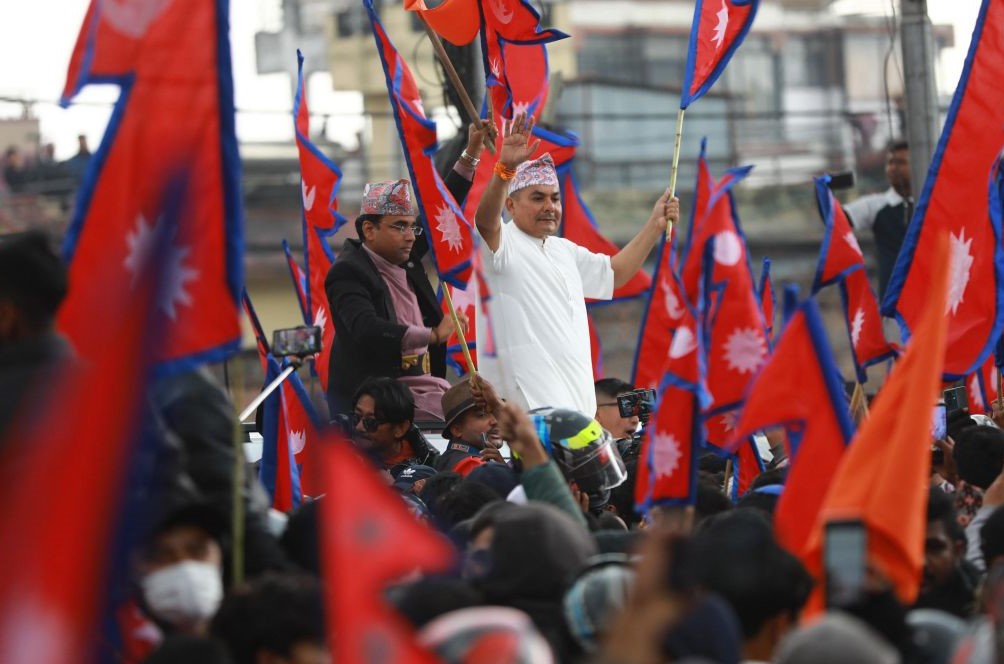Thousands of royalist supporters took to the streets of Kathmandu and other parts of Nepal this week, reigniting calls for the restoration of the monarchy nearly two decades after it was abolished. Waving Nepalese flags, portraits of former King Gyanendra, and chanting pro-monarchy slogans, protesters expressed deep dissatisfaction with the current federal democratic republic system.
In This Article:
The rally marks one of the largest royalist demonstrations in recent years, raising eyebrows across South Asia and prompting questions about the political future of the Himalayan nation.
Why Are Royalists Protesting Now?
Nepal’s monarchy, abolished in 2008, was replaced by a secular federal republic after a decade-long Maoist insurgency and a growing demand for democratic governance. However, many citizens — especially those disillusioned by political instability, corruption, and economic hardship — are once again looking toward the royal institution as a symbol of unity and stability.
Key Reasons Behind the Movement:
- Chronic political instability: Nepal has seen more than a dozen changes in prime ministers since 2008.
- Rising public frustration over corruption scandals in multiple administrations.
- Economic distress, worsened by the pandemic, inflation, and unemployment.
- A yearning for national identity and unity, which many feel has been eroded under democratic rule.
- Strong support from youth who have no living memory of the monarchy but are influenced by a growing social media campaign.
Who Is Leading the Movement?
Though the rallies appear spontaneous, they are reportedly supported by royalist factions and right-wing nationalist groups, including the Rastriya Prajatantra Party (RPP), Nepal’s most prominent pro-monarchy political party.
Former King Gyanendra Shah, while not directly involved in organizing the protests, issued a statement earlier this year urging “national unity, cultural preservation, and an end to self-serving politics,” which many interpret as tacit encouragement.
Government Response and Political Reaction
The current government, led by Prime Minister Pushpa Kamal Dahal “Prachanda”, a former Maoist rebel commander, has responded cautiously. While there has been no official crackdown, government spokespeople have dismissed the movement as regressive, arguing that the 2015 Constitution — drafted with widespread consensus — affirms Nepal’s commitment to a secular democratic system.
The ruling coalition has accused royalists of fueling nostalgia to distract from present-day reforms.
However, opposition parties have taken a mixed stance — some urging the government to listen to people’s concerns, others warning against giving legitimacy to what they call “anti-democratic sentiment.”
What Are the Protesters Demanding?
The demands range from symbolic to constitutional:
- National referendum on reinstating the monarchy.
- Restoration of Nepal’s status as a Hindu nation (Nepal became secular in 2007).
- Dissolution of federalism and a return to unitary governance.
- Immediate reforms to tackle corruption and unemployment.
While these demands have no formal platform in Parliament, the movement has clearly shaken the political discourse and revived national debates that many believed were closed.
Social Media’s Role in Revival of Monarchy Sentiment
Unlike past royalist movements, this wave is amplified by social media platforms. “Royalist support is gaining visibility across social media, though specific trends remain unverified in mainstream reports.”
Many young users are sharing nostalgic content about royal traditions, historical achievements, and perceived national unity during the monarchy, creating a digital momentum that supports street protests.
What Lies Ahead for Nepal?
Nepal faces a critical moment. Though there is no official move to restore monarchy, the growing public discontent and size of the rallies have prompted analysts to take the royalist sentiment seriously.
Some political experts believe the protests could force mainstream parties to reform governance practices, while others see a risk of polarization and cultural conflict if secularism and republicanism are openly challenged.
Either way, this movement has reopened national dialogue about what kind of governance best serves the Nepali people.
Moving Forward
While the immediate return of King Gyanendra remains highly unlikely under Nepal’s current constitutional structure, the royalist uprising has exposed deep fissures in the nation’s political psyche. As dissatisfaction with elected governments grows, monarchy — once considered obsolete — is once again part of Nepal’s mainstream political conversation.
By – Nikita



